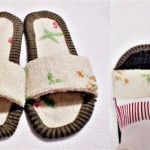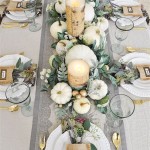DIY Decor for Fish Tanks
Creating a visually appealing and enriching environment for aquarium inhabitants doesn't necessitate expensive, store-bought decorations. Many captivating and functional items can be crafted at home using readily available materials. DIY decorations offer the benefits of customization, cost-effectiveness, and the satisfaction of personal creation. This approach allows aquarists to tailor the tank environment to the specific needs and preferences of their fish.
One popular DIY decoration is the terracotta pot cave. Clean terracotta pots, readily available at garden centers, provide excellent hiding places for fish. Soaking the pots in dechlorinated water for 24 hours prior to placement removes any potentially harmful chemicals. Pots can be placed on their sides, stacked, or even broken into pieces to create intricate structures. Ensure any sharp edges are smoothed to prevent injury to fish.
Rocks gathered from nature can also enhance a fish tank's aesthetic. However, careful selection and preparation are crucial. Avoid rocks containing metals or minerals that could leach into the water and harm the fish. Suitable rock types include slate, granite, and quartz. Thoroughly scrub and boil collected rocks to sterilize them and remove any loose debris before introducing them to the aquarium.
PVC pipes offer versatile options for creating tunnels, caves, and other structures. Select PVC pipes specifically designated for potable water to ensure they are safe for aquarium use. Pipes can be cut to desired lengths and connected using PVC cement. Sanding the edges smooth eliminates potential hazards to fish. Various configurations can be created to cater to the specific needs and preferences of different fish species.
Driftwood, carefully selected and prepared, adds a natural and aesthetically pleasing element to fish tanks. Soaking driftwood for several weeks, often with multiple water changes, is essential to remove tannins that can discolor the water. Boiling the driftwood further helps in sterilization and waterlogging, preventing it from floating. Ensure the chosen driftwood is suitable for aquarium use and free of pests or diseases.
Slate tiles offer a flat, stable surface for creating backgrounds, terraces, or caves. Selecting unglazed slate is crucial, as glazed tiles may contain harmful chemicals. Thoroughly clean the slate tiles before introducing them to the aquarium. They can be stacked, leaned against other structures, or attached using aquarium-safe silicone sealant.
Creating plant weights from stainless steel nuts and bolts prevents live plants from floating to the surface. Wrap the plant roots gently with aquarium-safe thread or fishing line and attach them to the stainless steel weight. This simple technique keeps plants securely anchored and allows for strategic placement within the aquarium environment.
Constructing a DIY background using foam board provides a cost-effective way to enhance the visual depth of the tank. Carving the foam board into desired shapes and textures creates a three-dimensional effect. Cover the foam board with aquarium-safe silicone and coat it with aquarium-safe paint or epoxy to prevent leaching of harmful chemicals into the water. Ensure thorough drying before placing the background in the tank.
Crafting decorations from natural materials such as coconut shells offers an eco-friendly and aesthetically pleasing option. Thoroughly clean and boil coconut shells to remove any residual coconut meat and sterilize the shell. Coconut shells can be used as hides, caves, or even as planters for aquatic plants. Ensure any sharp edges are smoothed to prevent injury to the fish.
Building a DIY filter using a plastic container, filter media, and a submersible pump provides a cost-effective filtration solution. Drill holes in the container for water flow, and layer filter media such as sponge, activated carbon, and ceramic rings. Place the submersible pump inside the container to circulate water through the filter media. Regular maintenance, including cleaning or replacing the filter media, is essential for optimal performance.
Creating DIY food dispensers from plastic bottles offers a convenient way to automate feeding schedules. Cutting a small opening in the bottle cap allows controlled release of food into the tank. Securely attach the bottle to the tank wall or lid. This method is particularly useful for vacation feeding or maintaining consistent feeding routines.
Utilizing these DIY methods, aquarists can personalize their fish tanks while providing enriching and functional environments for their aquatic inhabitants. Careful selection of materials and meticulous preparation ensures the safety and well-being of the fish. Regular maintenance and observation of the tank environment are essential for maintaining a healthy and thriving ecosystem.

How To Make A Divided Tank For Betta Fish Diy Decorations Aquarium

Custom Aquariums Fish Tanks Koi Ponds Okeanos Aquascaping Nyc Spongebob Tank Decorations Cool

Diy Aquarium Decoration Ideas How To Make A 2 Y Garden Villa

Account Suspended Cool Fish Tanks Tank Themes Decorations

Diy Super Mario Aquarium Decor Petdiys Com

Diy Aquarium Decor Fish Tank

Diy Simple Aquarium Castle Decor Krizz

Fish Cichlids Breeding Stone Hiding Rock Cave Aquarium Terrarium Landscaping Ornaments Diy Decor Com

Diy Aquarium Decorations Fishkeeping World

Aquarium Pyramids Statue Decoration Pyramid Figurine Diy Fish Tank Ornament For Tanks Breeding Pot Underwater Supplies M Com
Related Posts







